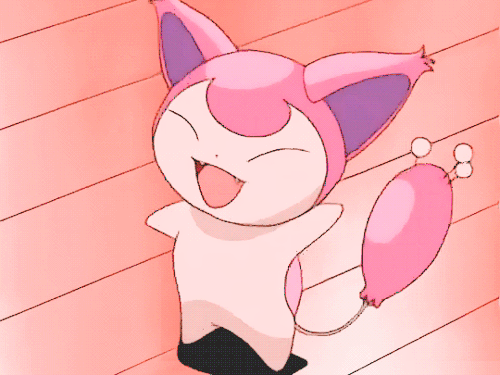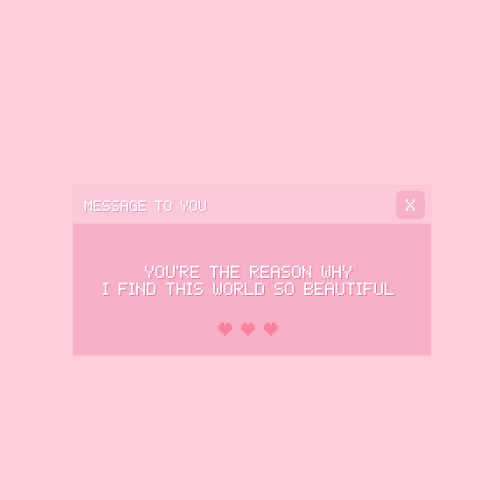Don't wanna be here? Send us removal request.
Text
let’s go back to the future!

In honour of this being the last blog for this class assignment, i think it’s only appropriate to take a look back earlier readings I have not discussed. “#tbt” is one of the most popular hashtags used on Instagram to date. As a part of the millennial generation, it seems that we live for what is old and analogue. Nostalgia is the biggest fashion statement and throwbacks are the biggest trend. Instagram is littered with enough preschool pictures every Tuesday and Thursday for this to ring true to my ears at least. We live in the age where teens proclaim to be “born in the wrong generation” and blissfully purchase record players, polaroid cameras and keyboards that look like type-writers. It comes as no surprise to me that there has been an emergence of a so called “IRL Fetish.” When it comes to communication, what is the oldest and most analogue form of it? Face to face conversations.

To some, “the offline” holds some sort of power to thrust the current generation into a new mental space where self acceptance soars and boredom ceases to exist because we have been transported to some kind of higher mental state; one our online lives somehow prohibit. However, it’s important to take notice of the fact that we are constantly connected across networks causes the “few” moments we spend offline to be more precious. The constant badgering and pressuring to disconnect and unplug often do the opposite. As human beings we often have difficultly processing the term “no.” More often than not, telling someone “Don’t look” almost encourages them to look.

The notion of cyber pessimism is not often allocated to the Millennial generation because we are often described as having been born with an iPad in our hands as we were raised in the time when there was a transition from web 1.0 to web 2.0. Although we should feel almost at home in the wake of technological innovation, majority of millennials are drawn to the off-the-grid lifestyle being sold by cyber pessimists. This is not only as a result of us bearing witness to moral break-downs and Internet crime, it is also because it’s the “in thing” to do. Bashing the online and online interactions evolved almost as distinct as the “vintage aesthetic.”

We say that everything comes back in style. By this logic, the youth in the era of my own children might look to our days as being the best days simply because it’s the popular thing to do and “face to face communication” may be an afterthought.
Works Cited
Lindgren, Simon. Digital Media and Society. SAGE, 2017.
Jurgenson, Nathan. “The IRL Festish”. The New Inquiry. 28 June. 2012. https://thenewinquiry.com/the-irl-fetish/. Accessed 15 November 2017.
0 notes
Text
i like your accent!

Many of the “friend groups” I have established during adolescence are almost entirely network based. The connections I share with most of these individuals stem from a connection I have with someone they know, leading to an establishment of various networks of people I share very little interests in common with but still yet, we are considered friends.

The only community I can think of belonging to is the Caribbean community. Being a part of a diaspora that is not connected by land and spans over the Caribbean Sea, one would think that it would be difficult to form a sense of community given the distance, the difference in language and dialects and cultural differences that are just as diverse as the people who live in theses countries. However, almost every Caribbean person I know is bonded to the other in some shape or form because of a shared heritage and history. Simply conversing about various topics in different accents can foster a sense of community. Much like how the Caribbean community spans distance, colour and creed, online communities join people of different genders (sometimes), vocations, religions and race by a common thread of interest.

The distance factor is an excellent parallel for online relations. Individuals do not need to be in the same place, or same room, country or timezone even. Strong bonds are formed regardless of a person’s location. Communities organised this way have a much easier chance of encouraging new members to join the community and take part in community activities.
“Accents” in online communities usually take form in a shared language or sentence structure among community members. Every community has its particular typing style and community-specific behaviour. Although communities are welcoming to new members, entering a new online community is almost like moving to a new country. There is also learning curve where members of a “country” (community) teach them the norms and customs of the country.

The Twitch community is an excellent example of the establishment of a history and a common language used among users. To further expand, the “Twitch Plays Pokemon” Project launched on Twitch even caused a “religion” and special symbols and meanings to evolve almost like the cross and evolution of Christianity. New users bare witness to already existing norms and customs and assimilate this culture much like someone new to a country.
Works Cited
Lindgren, Simon. Digital Media and Society. SAGE, 2017.
Hamilton, William A., Garretson, Oliver, and Andruid Kerne. “Streaming on Twitch: Fostering Participatory Communities of Play within Live Mixed Media.”Proceedings of the 32nd Annual ACM Conference on Human Factors in Computing Systems - CHI 14, 2014, doi:10.1145/2556288.2557048. Accessed 6 Nov. 2017.
0 notes
Text
type louder, i can’t hear you!

Turkle’s persistent view that online interaction is somehow inferior to offline conversation and causes difficulty expressing empathy and reading emotions, is one that I cannot agree with. The belief that offline conversations are more authentic than those that take place over the Internet is an incorrect one (to me at least).
Online conversations and offline conversations are not the same. They each have they own affordances and constraints much like online platforms. Although traditionally via text messages we cannot see someone’s facial emotions, read their body language and hear their tone, users of online messaging platforms have adapted to this “lack” and have learned to read emotions from typed text without these affordances.
One particular instance I always remember is an online incident with my boyfriend where he said something silly that made me upset. Trying to remain non-confrontational, I continued to type using the prerequisite number of “emoji-kisses” and maintaining a sentence structure that I believed to be identical to my normal typing. Despite this, he somehow managed to pick up the slightest change in my sentence structure and asked me about this. This leads me to the conclusion that it is entirely possible to curate and build an “online voice.”

Emotions and tone are not completely lost when communication takes place online instead of offline. It almost seems like picking up changes in tone increases intensity when speech is concrete and visible; this allows time for analysis. Emojis, italics, bold and even punctation afford us the opportunity to make up for the loss of physical and vocal cues of emotion and intent of speech. The way someone uses these tools allows for the manifestation of an individual and unique digital online voice just as distinct and separate as someone’s “real life” voice.

Further in disapproval of Turkle's argument, is the fact that online relationships are often more intimate than their offline counterparts. Lindgren notes this in Chapter Four where he suggests that people tend to share deeper and “hyper-personal” conversations online rather than in person. It is also suggested that because the real life visual element is lost, it allows for less inhibitions in the nature of the conversation. This means that more opportunities for empathetic acts exist.
Online and offline interactions will always differ in how they take place because they are two different contexts. This does not mean that either one is superior to the other. Frequent users of online messaging will eventually develop “voices” that allow for empathy and emotional interpretation.

Works Cited
Lindgren, Simon. Digital Media and Society. SAGE, 2017.
Morrison, Aimée. “Facebook and Coaxed Affordances”. Identity Technologies: Constructing the Self Online. Eds. Anna Poletti and Julie Rak. University of Wisconsin Press, 2014, pp. 112-131.
Turkle, Sherry. “Stop Googling. Let’s Talk”. The New York Times. 26 Sept. 2015. https://www.nytimes.com/2015/09/27/opinion/sunday/stop-googling-lets-talk.html?_r=0 . Accessed 13 October 2017.
0 notes
Text
break a leg!

This week’s reading (Lindgren, 27-44) prompted me to reflect the analogy presented about the front region and back region of various platforms (Goffman 1959). Instagram and Snapchat, for example, are literally platforms. Following the metaphor, Instagram is an a theatre and my profile, with all of my carefully chosen pictures is my stage. The process of “preparing a performance” i.e. taking pictures, choosing the most “Instagram appropriate one”, editing and captioning it, is aided by the affordances on Instagram. Although it’s not used as often, certainly not by me, Instagram has built in its interface, an editing page that comes up once you choose a picture you would like to post. Instagram, here, acts as an “acting coach” coaxing you to crop and filter and tag to your hearts content.

However, with the rise in the usage of social media as a career and the increase in online activity, the expectations of an Instagram post have also risen. No longer do I post random pictures of stuff in my room for sheer fear of not “receiving applause” (likes) from my chosen audience (as a private account, the people I allow to follow me).
The pressure to post something “Instagram Worthy” is high because almost everyone online is conscious of the fact that their social media presence can be seen as a small reflection of themselves and often spills into real life (the spike in youtubers and instagram models).
For instance, when you meet someone for the first time, they often ask to follow you on a social media platform (for example Instagram) as this is seen as an online representation of a person and judgements are therefore made about the person as a result. For example, when I see someone with a coherent and well thought out instagram theme I often see them as being more put together and generally more organised (Instagram themes take a lot of time and dedication).

The pressure builds when you take “likes” into consideration. The number of likes underneath a post is often seen as a reflection of how well the post was received. In fact, one of Instagram’s recent updates (another affordance) got rid of a rather embarrassing feature: until a post reached a certain number of likes (about 10 or 11) a list of names were displayed rather than a number. This lessened some of the anxiety behind posting a picture and worrying about accruing a lot of likes in a short space of time and increased posting frequency.
However, because of the popularity of the platform, there is still some social anxiety attached to a well performing Instagram profile. This could be a result of fear of online judgement and it’s often very scary to put very personal “fragments of yourself” (Simmel 1910) online where anyone can approve or disapprove openly.

Works Cited
Lindgren, Simon. Digital Media and Society. SAGE, 2017.
Morrison, Aimée. “Facebook and Coaxed Affordances”. Identity Technologies: Constructing the Self Online. Eds. Anna Poletti and Julie Rak. University of Wisconsin Press, 2014, pp. 112-131.
0 notes